Ocean Newsletter
No.466 January 5, 2020
-
From Osaka to the World—Achievements in Ocean Affairs at Japan’s first G20 Summit—
Hideo SUZUKI
Director, International Cooperation Bureau (Formerly Director-General for Global Issues) Ministry of Foreign Affairs, JapanAt the G20 Osaka Summit, leaders sealed a landmark packaged agreement, including the Osaka Blue Ocean Vision, aiming to wipe out additional pollution by marine plastic litter to zero by 2050.. Countermeasures against Illegal, Unreported and Unregulated (IUU) Fishing also featured for the first time in the Leaders’ Declaration. The Government of Japan intends to lead the way in taking such measures to resolve these problems. For example, Japan has launched the “MARINE Initiative” to advance effective actions to combat marine plastic litter at a global scale focusing on (1) Management of wastes, (2) Recovery of marine litter, (3) Innovation, and (4) Empowerment. Under this initiative, Japan will provide training for 10,000 officials engaging in waste management in developing countries by 2025. Businesses, non-governmental organizations and individuals should also contribute toward achieving the objectives from their respective perspectives and initiative. -
Blue Carbon: Scaling Management of Coastal Ecosystems for Climate Benefits
Steve CROOKS
Principal, Wetlands Science and Coastal Management, Silvestrum Climate Associates
Moritz von UNGER
Principal, Climate Policy, Silvestrum Climate AssociatesThe concept of ‘blue carbon’ was developed in 2009 to highlight the role of coastal ecosystems in the global carbon cycle and the importance of managing these threatened ecosystems more appropriately. There are six important pathways for the global application of blue carbon. As the methodological tools to adequately measure carbon’s impact on the atmosphere have become available, it is hoped that policies can be put in place around the globe to promote the use of blue carbon as massive carbon sinks. -
What Ocean Education Should Look Like at the University Level
Kimio HANAWA
Professor Emeritus, Tohoku UniversityEarth and Planetary Science, including Oceanography, is an example of a distributed model of Big Science with an extremely broad research focus. Education also covers a broad spectrum, from cultivating literacy in the understanding of the natural environment, to education in disaster prevention and mitigation, to education for leading edge research. Given the constraints in which national universities currently find themselves, the creation of a university education consortium is needed to take capacity development and research to the highest levels. Actually, in the field of Volcanology, a project to create a consortium for the field of Volcanology is already underway.
Blue Carbon: Scaling Management of Coastal Ecosystems for Climate Benefits
The Emergence and Development of the ‘Blue Carbon’ concept
It is now ten years since the term ‘blue carbon’ was first used by the United Nations and International Union for the Conservation of Nature (IUCN) to highlight the role of coastal ecosystems in the global carbon cycle and the importance of managing these threatened ecosystems more appropriately. The concept built on decades of science, but put that research in a post Kyoto Protocol world that was failing to recognize the biosphere in international climate mitigation policies and actions. Also in 2009, the California Climate Action Reserve released a report summarizing the potential for tidal wetlands restoration projects to be developed into a carbon market offset protocol. What emerged was a practical focus on vegetated coastal ecosystems, notably tidal marshes, tidal forests (particularly mangroves) and seagrass meadows. Practical, because of the clear science quantifying the direct link between atmosphere and soil storage; the recognition of scale of emissions from biomass and soil carbon stocks with destruction of coastal wetlands was globally significant; and because of the opportunity to include blue carbon under established terrestrial based frameworks under discussions at climate negotiations.
Very quickly groups of scientists, economists and policy analysts started to gather. In a key 2012 study (downloaded 39,000 times so far) emissions from degradation of these ecosystems was estimated to be around 450 million tons of carbon dioxide each year. This is an emission equivalent to roughly one third that from Japan’s economy causing damages valued at US$18 billion/ year. The majority of these emissions come from the soil carbon pool.
International organizations engaged. Conservation International, the Intergovernmental Oceanographic Commission and IUCN together formed the Blue Carbon Initiative, a network of scientists and policy analysts tasked with providing a firm science foundation answering questions that were emerging from the international policy community. The Intergovernmental Panel on Climate Change (IPCC) released the “2013 Supplement to the 2006 IPCC Guidelines for National Greenhouse Gas (GHG) Inventories: Wetlands,” in which Chapter 4 provides guidance to countries on recognizing the GHG implications of human activities on coastal wetlands. In 2014, the Verified Carbon Standard released VM0033 Methodology for Tidal Wetlands and Seagrass Restoration, providing a global means to connect the soils of blue carbon ecosystem to carbon finance. In 2015, the Paris Climate Agreement was adopted, highlighting the importance, and created the context for, greater inclusion of the biosphere and oceans within climate mitigation and adaptation policy. In 2017, the United States, Australia and Abu Dhabi provided the first examples of including coastal wetlands in national GHG inventories, and China, Fiji, Indonesia, Japan and other countries began exploring taking the same step. In 2018, the UNFCCC at COP 24 Katowice invited all relevant parties to apply the wetland supplement within their national greenhouse gas inventories.
The importance of these steps, particularly those leading to the inclusion of coastal wetlands within national greenhouse gas inventories cannot be understated. By recognizing emissions, actions for improved management can be developed and by including coastal wetlands in Nationally Determined Contributions under the Paris Climate Agreement, new policies and finance mechanisms brought to bear. Throughout this time the science continued to build, with paper after paper published in high profile journals confirming the scale of emissions and also exploring new aspects of blue carbon management.
Pathways to Global Application
10 years on we are now at an important moment. For established blue ecosystems we are transitioning from a phase of awareness raising and readiness building to on the ground operationalizing and scaling of actions. At the same time, the science continues to expand exploring new forms of blue carbon that can to be included in management actions. Here I highlight six pathways to global application for blue carbon:
1) Expand and integrate observations. There is a need to continue to build the science. In 2018 alone two blue carbon books were released (one from Japan) and 180 science articles published. The science is expanding to explore not only carbon buried on site but track that released from wetlands to be stored elsewhere in the ocean. Approaches are needed to improve mapping of methane emissions across the coastal landscape. Interesting questions are emerging about the role of kelp farming, in both extracting nitrogen from the water column but also supplying carbon to underlying sediments. International science programs are being supported, such BlueCARES mangrove and seagrass project, a collaboration between Indonesia, Philippines and Japan, funded by the Japanese Science and Technology Agency.
2) Understand climate interactions. Blue carbon ecosystems can respond resiliently to climate change and other human impacts but within limits that vary depending upon local conditions. It is important to understand, model and incorporate these interactions into plans and actions.
3) Incorporate ecosystems in infrastructure planning. Social drivers are the dominant cause of blue carbon ecosystem loss. The population of coastal areas continues to grow beyond 3 billion people. Commonly, hard infrastructure is built to the very edge of the sea displacing nature, or transport corridors constructed across inlets cutting off tidal connection. Better planning can prevent loss of blue carbon ecosystems as well as look to include blue carbon ecosystems as natural infrastructure to reduce human risk while maintaining ecosystem services.
4) Harness disruptive technology. These come in many forms. Communication technology is empowering and connecting individuals to information. Emergence of business cluster enterprises based around sustainability are helping communities improve livelihoods. Sustainability accreditation is aiding consumer markets differentiate sustainable products. Perhaps the largest potential disrupters will come from the financial sector. The surge in sales of green bonds (and subclasses of blue bonds and climate resilience bonds) reflect vast amounts of capital seeking stable investment and financial institutions recognizing their fiduciary responsibility to reduce risk to climate change. Established in 2011, the green bond market grew rapidly with US$250 billion issued in 2018 alone. Opportunities to include blue carbon ecosystems under bond-funded projects may emerge in many ways, such as inclusion as natural infrastructure in projects or through conservation measures.
5) Support transformation. There is a need to scale up conservation and restoration of coastal ecosystems. The practice of wetlands restoration is now 50 years old, supported by an industry valued at hundreds of billions of dollars annually. Yet, the knowledge in this sector is concentrated geographically, and not in the locations where the greatest needs are in the 21st century. There is an opportunity to connect and apply experience globally. It takes time and resources to build capacity in developing countries requiring sustained support. Under the carbon market robust methodologies are now available to connect most forms of soil, including blue carbon ecosystems to financing. There is a need to demonstrate and scale application. Beyond carbon finance, the inclusion of blue carbon ecosystems in Nationally Determined Contributions will be critical for many countries in linking management of ecosystems to finance for climate mitigation and adaptation. Sources of finance may be derived via multinational and binational agreements, carbon taxes, adaptation support, debt swap for nature and blue/green bonds.
6) Recognize the global sustainability context. While loss of blue carbon ecosystems is often a response to local drivers, national scale impacts are often driven by global pressures, such as food production. If blue carbon ecosystems are to be managed for sustainability, mechanisms must be found that accommodate pressures from population growth, changing demands in societal preferences, and global environmental change. Tackling these challenges requires a global perspective. There will be a need for intergovernmental cooperation to tackle cross-boundary issues, and for coordination between government silos. Though difficult to tackle there is an imperative need to seek solutions at the nexus between food production, energy production, access to markets and environmental protection, all in the context of resilience and risk reduction.
The Future of Blue Carbon
Finally, the blue carbon opportunities from and for domestic and international emissions trading – including concerning Japan’s Joint Crediting Mechanism as well as the incoming enhanced-ambition instruments of the Paris Agreement whose rules are to be negotiated at COP25 in Santiago, Chile at the end of this year – will deserve specific attention. The challenges of the Paris pathway – reaching zero-net emissions by 2050 – are enormous and cannot be overcome without addressing blue carbon emissions and their lasting potential as massive carbon sinks. As the methodological tools to adequately measure their exact carbon impact have become available, it is a priority for policymakers across the globe to make blue carbon an integral part of all emissions trading activity.
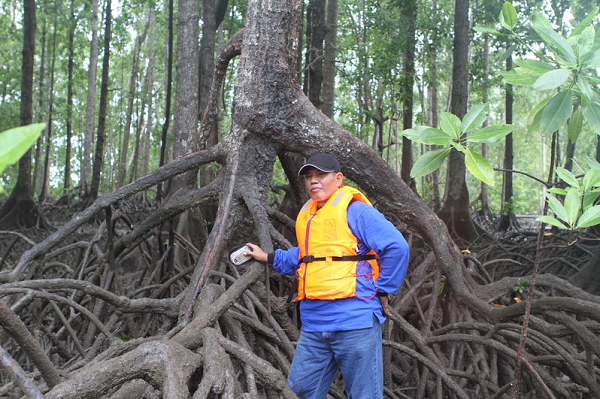
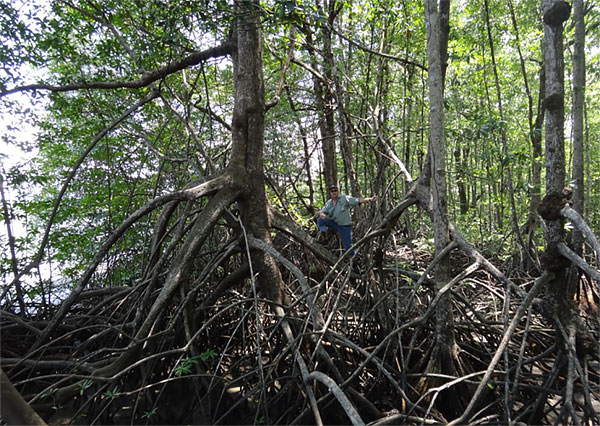 Mangroves are prolific sequesters of carbon: Mangrove wood is twice as dense than many terrestrial trees. Even so, more than 80% of the ecosystem carbon stock lies hidden, buried in the soil.
Mangroves are prolific sequesters of carbon: Mangrove wood is twice as dense than many terrestrial trees. Even so, more than 80% of the ecosystem carbon stock lies hidden, buried in the soil.
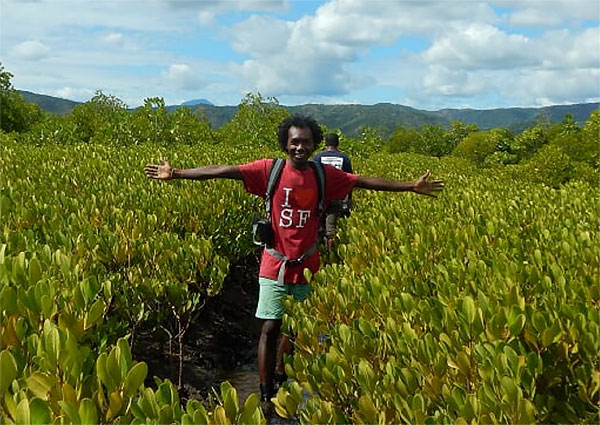 Mangrove Restoration, Madagascar: Zo Andriamahenina of Blue Ventures proudly shares a village community mangrove restoration project in northern Madagascar to recover local fisheries and sequester carbon.
Mangrove Restoration, Madagascar: Zo Andriamahenina of Blue Ventures proudly shares a village community mangrove restoration project in northern Madagascar to recover local fisheries and sequester carbon.
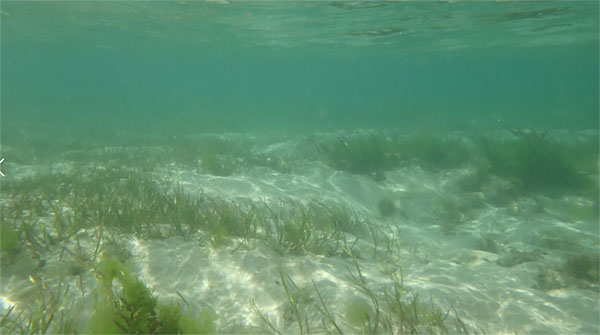 Seagrass meadows: Hidden beneath the sea expansive, but declining, areas of seagrass sequester carbon and counter local ocean acidification.
Seagrass meadows: Hidden beneath the sea expansive, but declining, areas of seagrass sequester carbon and counter local ocean acidification.
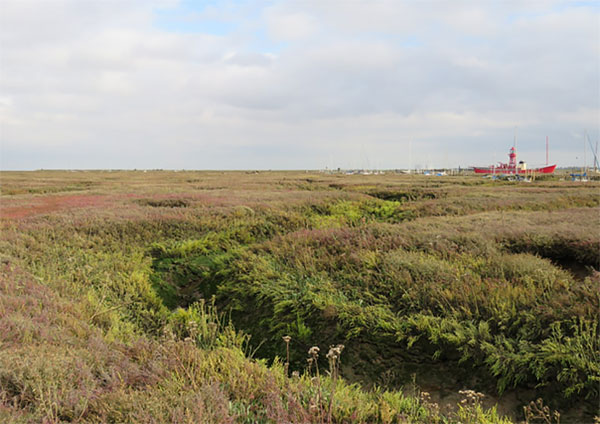 Tidal marshes: Found in temperate climates tidal marshes are critical to supporting local fisheries, maintaining water quality as well as storing carbon.
Tidal marshes: Found in temperate climates tidal marshes are critical to supporting local fisheries, maintaining water quality as well as storing carbon.
